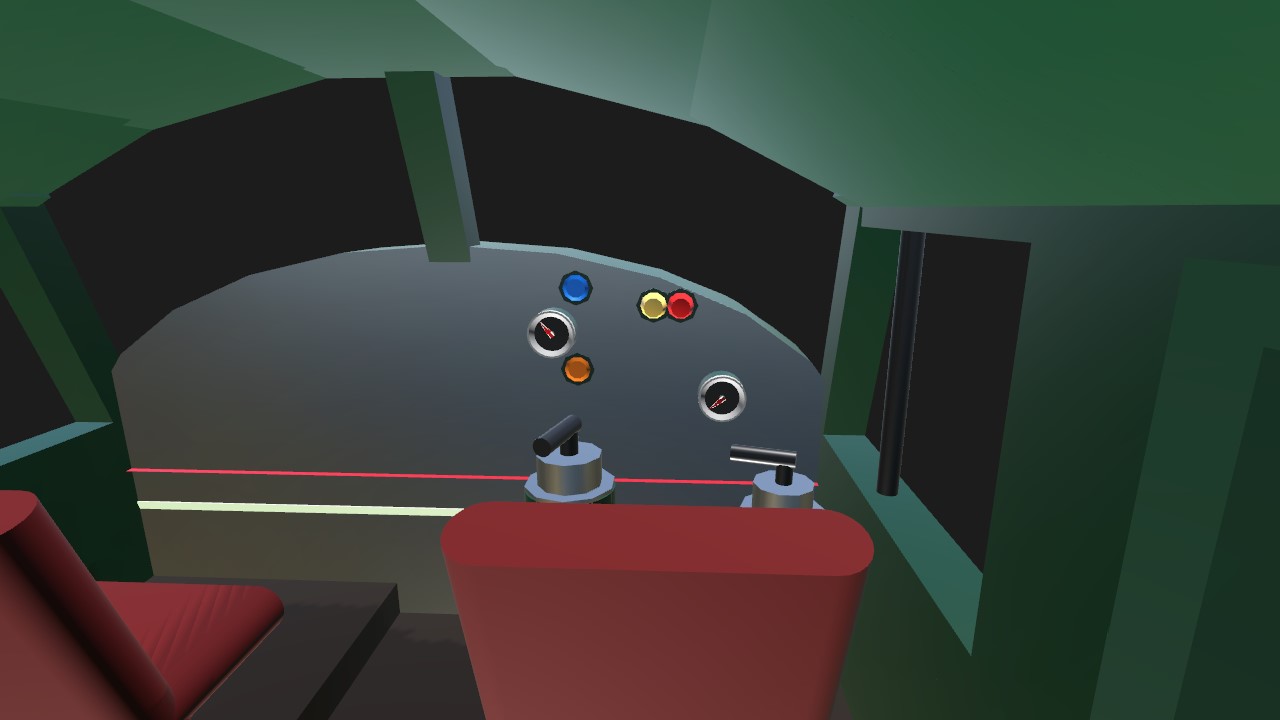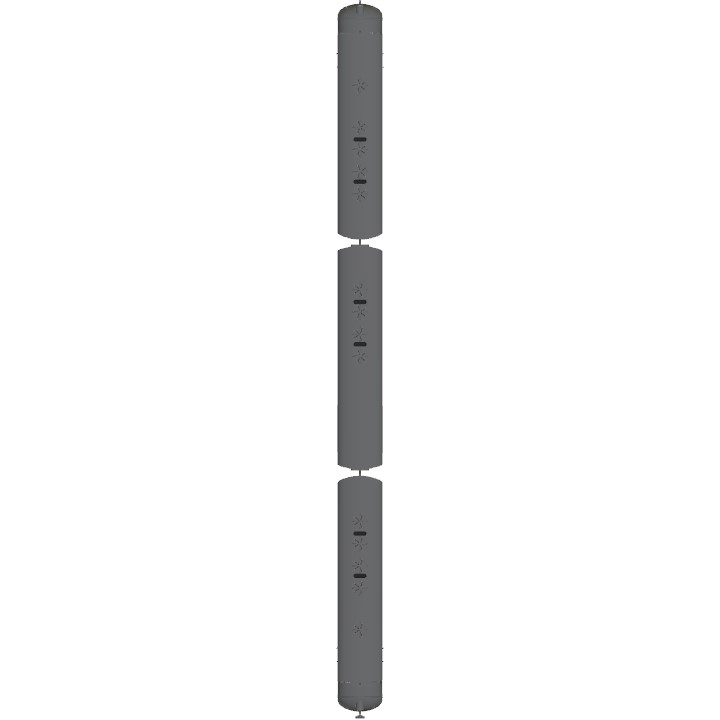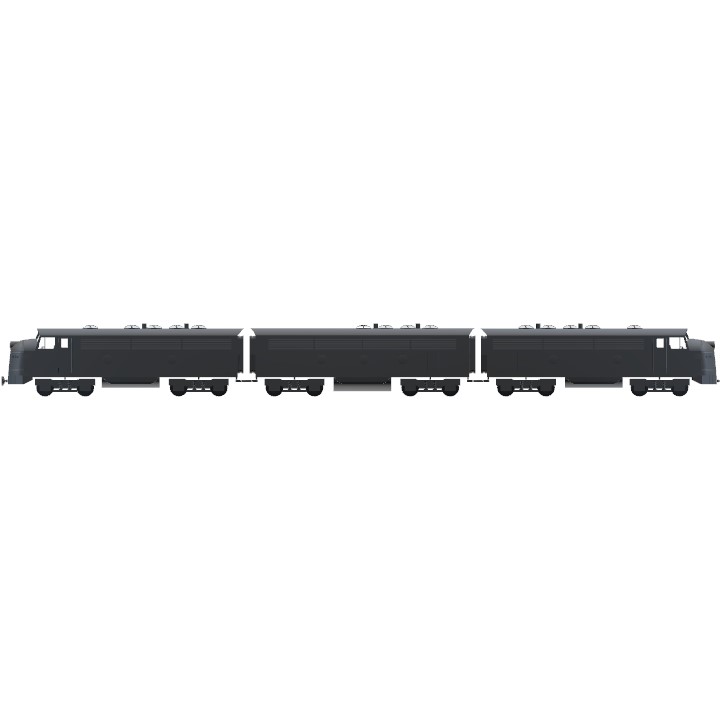History of the Burlington Northern
The Burlington Northern Railroad was the product of the merger of four major railroads: the Great Northern Railway, the Northern Pacific Railway, the Spokane, Portland and Seattle Railway and the Chicago, Burlington and Quincy Railroad.
The four railroads shared a very intertwined history, due to the efforts of James J. Hill, the railroad tycoon who had founded the Great Northern Railway. Hill purchased an interest in the Northern Pacific in 1896 as the railway endured a period of financial turmoil. Hill attempted to merge the two railways but was rebuffed by the leaders of the Northern Pacific.
In 1901, the two railways teamed up to purchase nearly all shares of the Chicago, Burlington and Quincy Railroad, giving both a needed connection to Chicago, the nation's railroad hub. That same year, came the next attempt to merge the railroads with the establishment of the Northern Securities Company, a trust that controlled all three, with Hill serving as president. The company was sued in 1902 under the Sherman Antitrust Act and in 1904 the Justice Department won in the Supreme Court ruling Northern Securities Co. v. United States.
Although the ruling forced the three companies to be operated independently, they were still closely linked, even sharing a headquarters building, the Railroad and Bank Building in Saint Paul, Minnesota. In 1905, the Spokane, Portland and Seattle Railway was founded. Like the Chicago, Burlington and Quincy Railroad, this new railroad was co-owned by the Great Northern and Northern Pacific and allowed both to access the Pacific Northwest.
Leaders attempted to merge another two times, in 1927 and 1955, but were unsuccessful.
The four railroads were finally cleared to merge on March 2, 1970, after a legal challenge that once again went to the Supreme Court. A newly established holding company, Burlington Northern, Inc. purchased the four railroad companies and merged them into the Burlington Northern Railroad.
To further expand the Burlington Northern, a single track was constructed in 1972 into the Powder River Basin to serve various coal mines. The expansion was a source of traffic unprecedented in United States railroad history. In 1971, the first full year for the new railroad, trains carried 64,116 million revenue ton-miles of freight, by 1979 the total was 135,004 million.[2] Most of the increase was attributed to Powder River coal from Wyoming.
The Burlington Northern, along with handling freight trains, briefly operated inter-city passenger trains. The BN had started operations just a matter of weeks before the end of service of the original California Zephyr, which had been operated by the CB&Q, in conjunction with the Denver & Rio Grande Western and Western Pacific railroads, and continued to operate the North Coast Limited, Mainstreeter, Empire Builder, Western Star, Denver Zephyr, "Gopher", and "International", until Amtrak took over intercity passenger service in May 1971, thus becoming the last "new" Class I railroad to operate its own passenger trains. The BN also operated a commuter line inherited from the CB&Q from Chicago Union Station to Aurora, Illinois.
In May 1980 when Mount St. Helens erupted, the BNR owned the land around the summit of Mount St. Helens in Washington state. In the 19th century, the United States government distributed land to railroads as a way to open up the American West and the 9,677-foot peak was granted to the Northern Pacific. It was inherited in the 1970 merger by Burlington Northern. Following the eruption the land including the volcano was subsequently transferred in a land swap between the railroad and the United States Forest Service so the Mount St. Helens National Volcanic Monument could be established.
On November 21, 1980, the St. Louis–San Francisco Railway was acquired, giving the railroad trackage as far south as Florida.
In the early 1980s two independently operated railroads, owned by Burlington Northern Inc. were absorbed into the Burlington Northern Railroad; the Colorado and Southern Railway was absorbed in 1981, followed by the Fort Worth and Denver Railway in 1982.
The railroad relocated its headquarters from Saint Paul to Seattle, Washington in 1981,[3] as well as its parent company and sister companies.
All of Burlington Northern, Inc's non-rail operations were spun off to a new company, Burlington Resources in 1988.
The railroad once again relocated its headquarters in 1988, moving from Seattle to Fort Worth, Texas. -WIKI
Controls
Specifications
Spotlights
- Inuyasha8215 3.0 years ago
General Characteristics
- Predecessor CP F7a
- Created On iOS
- Wingspan 10.6ft (3.2m)
- Length 132.6ft (40.4m)
- Height 13.4ft (4.1m)
- Empty Weight 507,372lbs (230,140kg)
- Loaded Weight 529,330lbs (240,100kg)
Performance
- Power/Weight Ratio 0.059
- Wing Loading N/A
- Wing Area 0.0ft2 (0.0m2)
- Drag Points 25544
Parts
- Number of Parts 1023
- Control Surfaces 0
- Performance Cost 5,051







@scratchoza Than you so much for the upvote!
@RoadTrainBuilder @MRM19 More like... MmRrrrmm1988
Now this is... P e r f e c t!